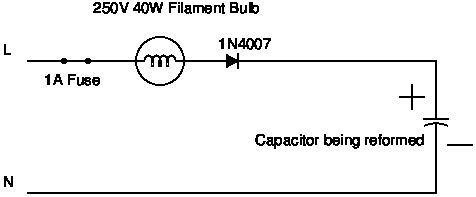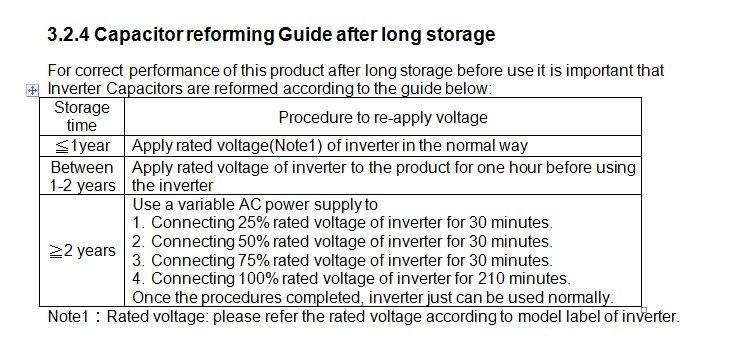Posted by Andrew Tinsley on 14/03/2018 11:17:50:
So what is the way to reform a set of VFD caps? Simply hook up to a variac and slowly up the volts to mains plus over an hour or so?
I must admit I am a bit askance at having to reform the caps after a year. My electrolytic caps are fine, even after a few years in storage, are VFD caps some special sort of aluminium oxide caps, as they appear to be somewhat delicate?
Andrew.
The best way to keep capacitors in good order is simply to use them regularly. The need to reform capacitors occurs only after they've not been used for years. Beware if you're the kind of chap who buys bargains. That second-hand VFD may not have been powered up in decades.
The insulation inside an unused electrolytic capacitor tends to weaken with time. Periodic application of power reforms the insulating layer. When a supplier recommends regular power-ups he is ensuring that the insulation is kept thick. It's not that his capacitors only last a few years, it's that maintenance much reduces the chance of a failure later on.
Assuming you've been negligent or have inherited suspect capacitors one way of reforming them is to power-up the host equipment via a Variac. The procedure is to apply a low voltage for about 20 minutes, then increase it in 3 or 4 stages to full voltage. If the capacitor warms up, replace it. I wouldn't recommend it on a VFD – semiconductor circuits dislike being fed low-voltages in this way and you might damage something else.
Better to remove the capacitors and wire them up as shown in the circuit below.

The 40W (or smaller) bulb limits the amount of current that can flow especially if the capacitor fails. When switched on the bulb should flash briefly, then dim rapidly down and go out. At that point leave the capacitor powered up for half an hour. If the capacitor warms up or the bulb glows continually, stop immediately and buy a new capacitor. Of course if you've gone the trouble of removing old capacitors in the first place you might just as well replace them without playing electrical Русская рулетка!
Reforming capacitors in old valve radios is often done in-situ with either the variac or bulb method. It's a special case. The intent is to restore the radio if possible using it's original components for heritage reasons. Be aware that old-fashioned valve radios are more resiliant to this particular electrical mistreatment than modern stuff.
Usual warnings about the circuit and how it's used. Think electrocution, burns and a significant chance the capacitor might explode. Mains electricity can kill. Please don't try it unless you understand what you're doing.
Dave
SillyOldDuffer.






